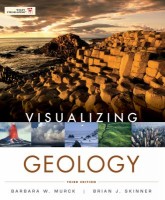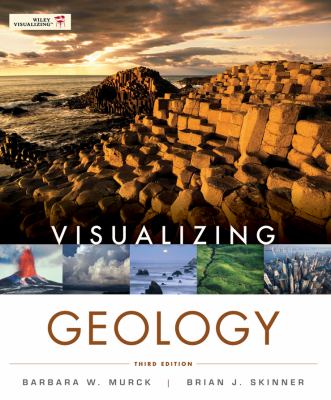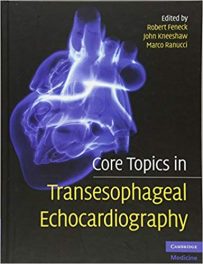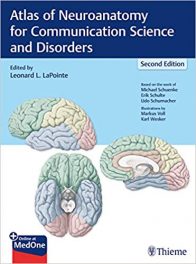 Authors: Barbara W. Murck and Brian J. Skinner
Authors: Barbara W. Murck and Brian J. Skinner
Publisher: Wiley Publishing – 558 pages
Book Review by: Deekay Daulat
A large book with a generous number and variety of full-color, three-dimensional images spread along other material including text over more than 550 pages of this book really makes learning geology easy, and the time spent studying, highly productive. This book is definitely a keepsake as a valuable reference source.
The book contains 16 chapters, four useful appendices – one ach on units and their conversions, a periodic table of elements, tables of the properties of selected common minerals, and self-test answers – and a glossary of terms relating to geology that is five pages long. All this makes for outstanding value in a book that’s filled with lots of graphics and easy-to-read text on many topics within geological studies.
While the book’s authors Barbara Murck and Brian Skinner did most of the work in putting this volume together, they got a lot of help from numerous people, including three academic research consultants: Richard Mayer, Jan L. Plass and Matthew Leavitt.
In addition, an independent research and assessment firm – SEG Research – conducted a national, multi-site effectiveness study of students enrolled in entry-level college Psychology and Geology courses to improve the quality of material chosen for this valuable book. Contributions by instructors and students also helped shape this book into a highly useful one, with their comments and constructive criticism.
Also, some 120 visualizing reviewers, focus group participants and survey respondents, as well as 17 student participants, further helped enhance the quality and effectiveness of the material presented in this book. Lastly, over a hundred professionals provided feedback and suggestions for the first, second and third editions of this book.
Looking at the photos is like traveling in an airplane, and at times, being in a spaceship looking down on Earth. It’s a wonderful feeling to do this. You see views on page 173 (in chapter 6 on Volcanoes and Igneous Rocks) of volcanoes for example, including the Kilauea Volcano in Hawaii seen at night, showing long lines of red hot lava flow, contrasted against the dark blue hillsides.
Here is a brief overview below of the chapters in this book. You will note the comprehensive range of subjects covered.
- Earth as a Planet
- Earth Materials
- How Old is Old? The Rock Record and Geologic Time
- Plate Tectonics
- Earthquakes and Earth’s Interior
- Volcanoes and Igneous Rocks
- Weathering and Erosion
- From Sediment to Sedimentary Rock
- Folds, Faults and Geological Maps
- Metamorphism: New Rock from Old
- Water On and Under the Ground
- The Ocean and the Atmosphere
- Climactic Extremes: Deserts and Glaciers
- Earth’s Climates: Past, Present and Future
- A Brief History of Life on Earth
- Understanding Earth’s Resources
The content in the book is extremely well organized and material for each chapter is very laid out with topic headings, discussions and explanations and a variety of images that make understanding and retaining the facts much easier.
For example, chapter 2 – Earth Materials – starts out with a chapter heading and a brief summary in large font of what is covered in it, a Chapter Outline, followed by a Chapter Planner, then the beginning of a topic with a large heading – Elements and Compounds – followed by a topic with a smaller sub-heading: Compounds, Molecules, and Bonding.
This is followed by the next topic with a large heading – What Is a Mineral? followed by a topic with a smaller sub-heading: Telling Minerals Apart.
And so on goes the chapter organization. Several features are provided in each chapter, namely Geology InSight (with lots of small photos relating to the topic), Case Study, and Amazing Places.
At the end of each chapter is a Summary with headings on each topic covered in the chapter. There are also other items at the end of each chapter such as: Key Terms; Critical and Creative Thinking Questions; and a Self-Test
Lots of useful material within the book, ample images of a large variety, and superb organization of material in each chapter make this an excellent book for easy learning and retention, and a treasured reference source.
Wiley Visualizing is a model of learning that Wiley Publishing uses in numerous books, particularly textbooks. It is based on decades of research on the use of visuals in learning (Mayer, 2005). The visuals teach key concepts and are pedagogically designed to explain, present and organize new information. The publisher also utilizes the WileyPLUS Learning Environment model as a natural extension of how we learn.
Barbara Murck is a geologist and senior lecturer in environmental science at the University of Mississauga. She completed her undergraduate degree in Geological and Geophysical Sciences in Princeton University and then spent two years in the Peace Corps in West Africa before returning to PhD studies at the University of Toronto.
Her subsequent teaching and research has involved an interesting combination of geology, natural hazards, environmental science, and environmental issues in the developing world, primarily in Africa and Asia. She also carries out practical research on pedagogy. She is an award-winning lecturer who has coauthored a number of books, including several with Brian Skinner.
Brian Skinner was born and raised in Australia, studied at the University of Adelaide in South Australia, worked in the mining industry in Tasmania, and in 1951 entered the Graduate School of Arts and Sciences, Harvard University, from which he obtained his PhD in 1954.
Following a period as a research scientist in the United States Geological Survey in Washington D.C. he joined the faculty at Yale in 1966, where he continues his his teaching and research as the Eugene Higgins Professor of Geology and Geophysics. Brian Skinner has been president of the Geochemical Society, thw Geological Society of America and the Society of Economic Geologists. He holds an honorary Doctor of Science from Toronto University and an honorary Doctor of Engineering from the Colorado School of Mines.







